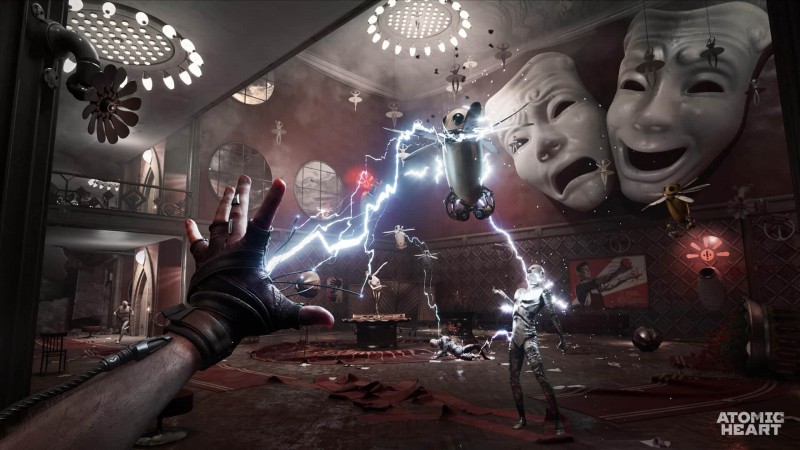After more than half a decade in development, Atomic Heart arrives as the first title from developer Mundfish. This BioShock-inspired shooter is an impressive debut in many ways, and it wears its influences on its sleeve – for better and for worse. The game’s dazzling world design, exceptional production values and fast-paced fights make for a solid campaign, but the derivative plot and often painful writing tend to drag it down.
The premise of the Atomic Heart is one of its most intriguing elements. The game takes place in an alternate-history Soviet Union that has become the world’s leading superpower after World War II, thanks to the scientific innovations of Facility 3826. The player assumes the role of P-3, an operative agent under the command of the Soviets. Genius Dr. Dmitry Sechenov. When Sechenov’s latest social experiment goes wrong, P-3 is ordered to fight his way through the facility’s rampaging robots and murderous mutants to reach the truth.
The P-3 uniquely has access to upgradeable weapons and elemental abilities, but the combat is less BioShock-like than it might seem. Instead of stealth, hacking and environmental traps, Atomic Heart demands faster and more reactive shooting to fend off superior numbers of attackers. Enemies have special weaknesses that can only be exploited with clever combinations, such as covering plant-based mutants with accelerator gel before igniting them with incendiary rounds. The battles are both dangerous and satisfying, and the variety of opponents keeps the combat engaging.
The world of Facility 3826 is also gorgeously realized with Atomic Heart’s excellent art direction. From the very first scene, the game impresses you with its exceptional production values. The meticulous attention to detail is seen in everything from the communist architecture to the internal components of the robots, and it really makes the game’s what-if scenarios admirable. The sprawling overworld of the Kazakh mountains also feels large without being empty; Lots of surprising secrets and environmental variety complement the close-quarters fights and spatial logic puzzles of the underground levels.
However, Atomic Heart’s biggest problem is its writing. Most of the dialogue ranges from irritating to downright unbearable. P-3 is an angry military man who is constantly yelling, cursing and using mindless sarcasm. He talks a lot – and it’s usually to complain about something. His interactions with the sexually frustrated Crafting Machine are particularly painful, and the rest of the cast isn’t much better. The screenplay is not provocative; It’s just covering up a lack of adequate character development.
Sadly, the actual plot is also a major let down. Much of it is told via abrupt info-dumps, which quickly erode any sense of mystery and make all the events incredibly predictable. The story spends most of its time clumsily repeating many of BioShock’s themes with a Soviet spin. Sadly, the best writing is hidden throughout the game’s various terminals, which involve most of the world building and intertwining other characters.
On the one hand, Atomic Heart is a good game on its own merits. The fun and frantic gunplay, excellent visual design, and the intricate level of detail in its world are worth your time experiencing it. On the other hand, it could have been much more. The story and characters simply don’t do justice to the game’s evocative premise, and some better writing would have done wonders. Despite this, Atomic Heart is still an exciting and memorable debut outing from Mundfish.
